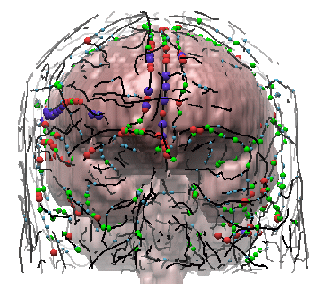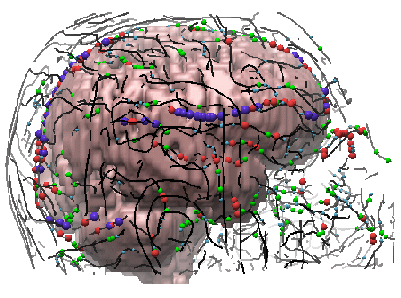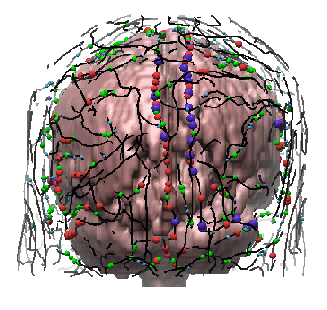



We used the first image to determine the matches in the 23 others (this is the really weak point of this experiement). Then, we used the previous multiple registration algorithm to register the 24 images together without considering one as the reference and to merge the different observations of each feature into a single model feature including an enhanced geometric location and its probability of observation in the images.




The brain surface and the crest lines are from the first image (just to give a reference). Balls represent extremal points of the model (after fusion of the 24 images). Their size and color indicate their observation probability: from purple (95%), [red, green] to blue (75%).
The results we obtain are very sensitive to the results of the matching step, an in particular the bound used for accepting point matches. We believe that using frames instead of points and a precise multiple matching algorithm (to be designed) could help a lot to stabilize the results.
We can then think to correlate the observation probability with the geometrical stability of features, evaluate feature selection algorithms, etc. With several patients models and a non rigid matching algorithm, we could also caracterize the most stable extremal points and see if their correspond to known anatomical landmarks.